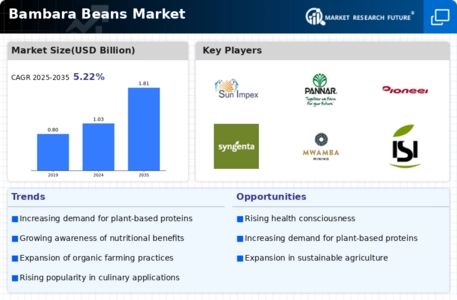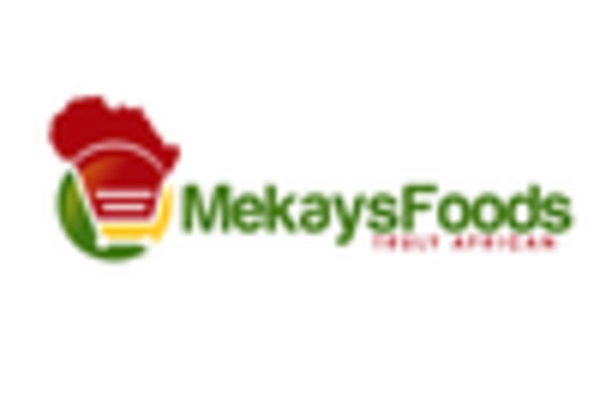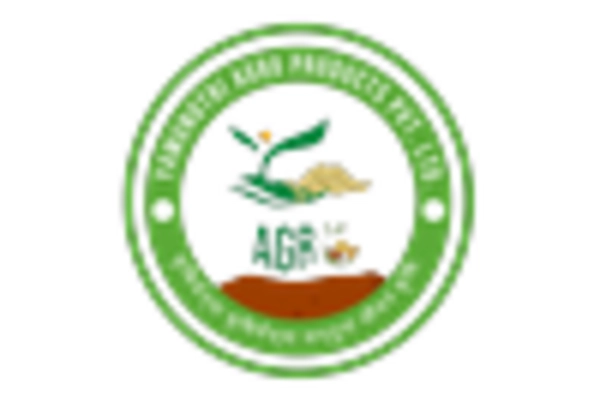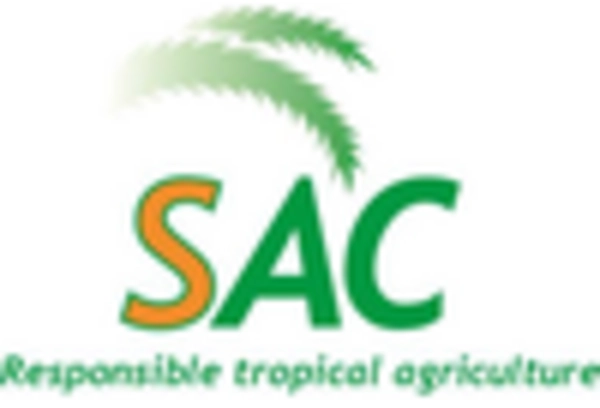Culinary Versatility
The Bambara Beans Market is benefiting from the culinary versatility of these legumes. They can be utilized in a variety of dishes, ranging from traditional stews to modern salads and snacks. This adaptability makes Bambara beans appealing to chefs and home cooks alike, as they can be incorporated into diverse cuisines. Recent market analysis suggests that the demand for innovative food products is on the rise, with consumers seeking new flavors and textures. As Bambara beans gain popularity in culinary circles, their market presence is expected to expand. The ability to cater to various dietary preferences, including vegetarian and gluten-free diets, further enhances their appeal. Consequently, the Bambara Beans Market is likely to experience growth as more consumers explore the culinary possibilities these beans offer.
Sustainable Farming Practices
The Bambara Beans Market is poised for growth as sustainable agricultural practices gain traction. Farmers are increasingly adopting eco-friendly methods that align with the principles of sustainability, such as crop rotation and organic farming. Bambara beans, known for their ability to improve soil fertility and reduce the need for chemical fertilizers, fit well into these practices. According to agricultural reports, the cultivation of Bambara beans can enhance biodiversity and promote soil health, making them an attractive option for environmentally conscious farmers. This shift towards sustainability not only benefits the environment but also appeals to consumers who prioritize ethically sourced products. As the demand for sustainable food options rises, the Bambara Beans Market is likely to see increased investment and interest from both producers and consumers.
Economic Viability for Farmers
The Bambara Beans Market offers economic advantages for farmers, particularly in developing regions. The cultivation of Bambara beans requires relatively low input costs and can yield substantial returns, making it an attractive crop for smallholder farmers. Recent agricultural studies indicate that the profitability of Bambara beans can be higher than that of other traditional crops, providing farmers with a viable source of income. This economic potential encourages more farmers to adopt Bambara bean cultivation, thereby increasing supply in the market. Additionally, as demand for these beans rises, farmers may benefit from improved market access and pricing. The economic viability of Bambara beans not only supports local economies but also contributes to food security, positioning the Bambara Beans Market as a key player in agricultural development.
Nutritional Benefits of Bambara Beans
The Bambara Beans Market is experiencing a surge in interest due to the nutritional advantages these legumes offer. Rich in protein, fiber, and essential vitamins, Bambara beans are increasingly recognized as a valuable food source, particularly in regions where malnutrition is prevalent. Recent data indicates that these beans contain approximately 25% protein, making them an excellent alternative to animal protein. This nutritional profile appeals to health-conscious consumers and those seeking plant-based diets. As awareness of the health benefits of Bambara beans spreads, the market is likely to expand, driven by both consumer demand and the need for sustainable food sources. The growing emphasis on nutrition in food choices suggests that the Bambara Beans Market will continue to thrive as more individuals incorporate these beans into their diets.
Rising Demand for Plant-Based Proteins
The Bambara Beans Market is witnessing a notable increase in demand for plant-based proteins. As consumers become more aware of the environmental impact of animal agriculture, there is a shift towards plant-derived protein sources. Bambara beans, with their high protein content and nutritional benefits, are well-positioned to meet this demand. Market Research Future indicates that the plant-based protein sector is projected to grow significantly in the coming years, driven by health trends and sustainability concerns. This shift presents an opportunity for the Bambara Beans Market to capitalize on the growing interest in plant-based diets. As more individuals seek alternatives to traditional protein sources, Bambara beans may emerge as a preferred choice, further solidifying their role in the evolving food landscape.


















Leave a Comment